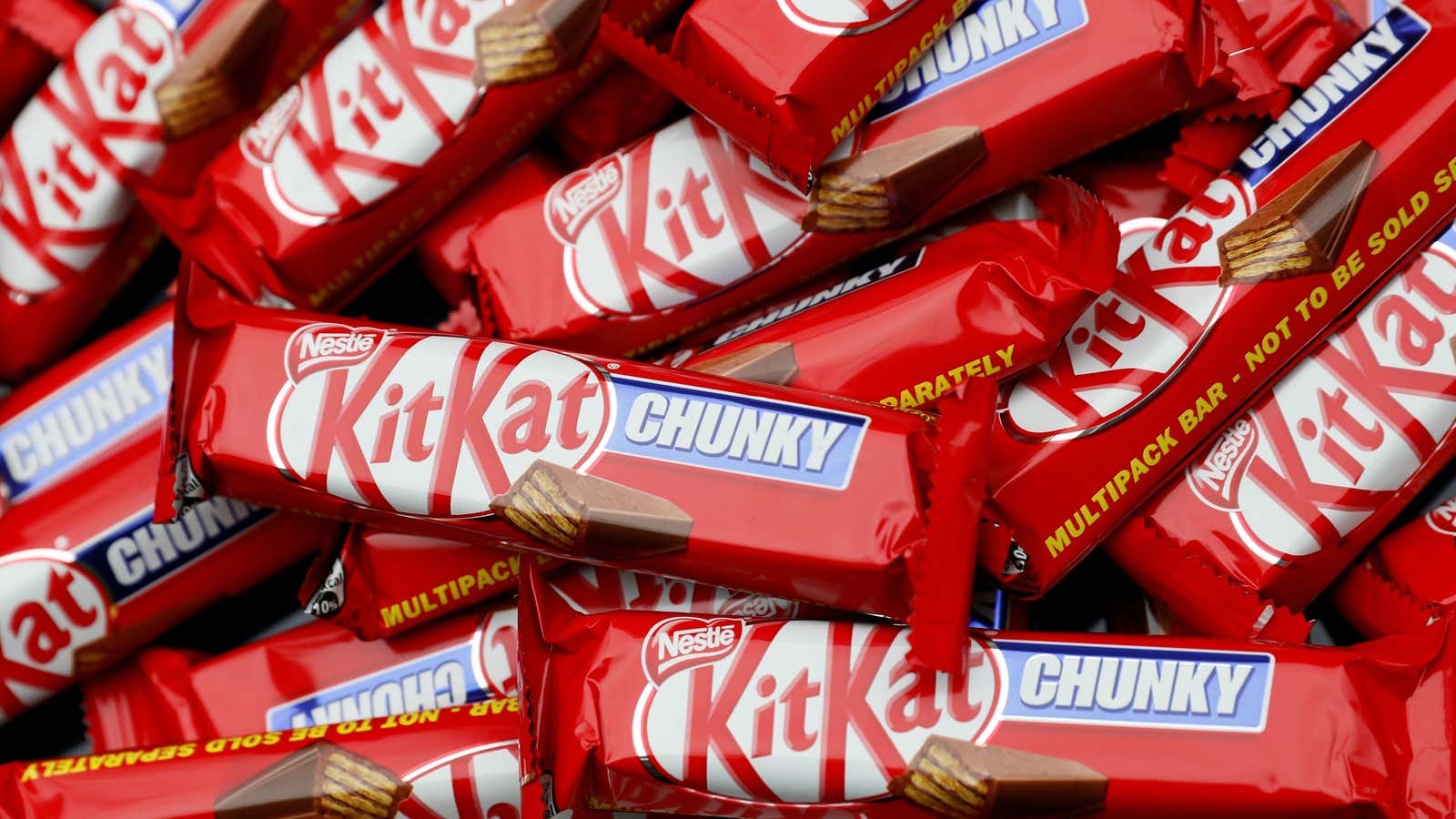Two of the planet’s largest food companies have been locked in a bitter, multinational, decade-long legal saga over the shape of a chocolate bar. At stake is whether Kit Kat’s “four-finger” shape is distinctive enough to be protected by trademark. And the fight may be reaching its climax.
On one side is Nestlé, the Swiss maker of the ubiquitous Kit Kat bar, which has fought to trademark the design around the world. On the other is Mondelez, the US company that owns UK chocolate maker Cadbury.
In 2010, Nestlé formally filed to for a trademark in the UK. The application was opposed by Cadbury, and six years later, in 2016, the High Court in London ruled against Nestlé. The Swiss giant appealed that decision. This week, the Court of Appeal said the candy design did not meet the threshold needed for such protection—despite being among the most recognizable shapes in confectionary and achieving sales of £25-33 million ($32-43 million) per year.
“A shape of this kind is not inherently such that members of the public are likely to take it as a badge of origin in the way they would a newly coined word or a fancy name,” the judges wrote in their 32-page decision (pdf).
In Europe, the fight between the two massive food companies goes back even further. In 2007, Cadbury filed a request to the European Union Intellectual Property Office (EUIPO) to declare Kit Kat’s existing trademark as invalid. The EUIPO rejected the request, saying the shape had acquired “distinctive character.” But in 2016, the EU’s second-highest court annulled that decision, forcing the EUIPO to decide whether Kit Kat had acquired “distinctive character” in each of the 28 EU member states.
The most recent ruling can only be highly irritating for leadership at Nestlé, which has successfully trademarked the Kit Kat shape in Australia, Canada, France, Germany, and South Africa, among other places. Still, that a trademark remains elusive in the UK and the EU overall creates a patchwork of protections for the company.
The British judges that handed down the most recent decision have acknowledged in their own pithy way that cases over a candy bar’s “distinctive character” can smack of absurdism. “It may seem surprising that these simple words have caused so much litigation and so many erudite authorities, but that has undoubtedly been the case,” wrote judge Geoffrey Vos in the court’s formal decision.
And it doesn’t look like the fight is going to die down.
Nestlé has said it will be considering its options moving forward, and isn’t ready to give up the fight. The Swiss conglomerate’s resilience—and Mondelez’s persistence—isn’t necessarily surprising. A trademark can last a lifetime, offering a monopoly right to the companies that are awarded such protection.
